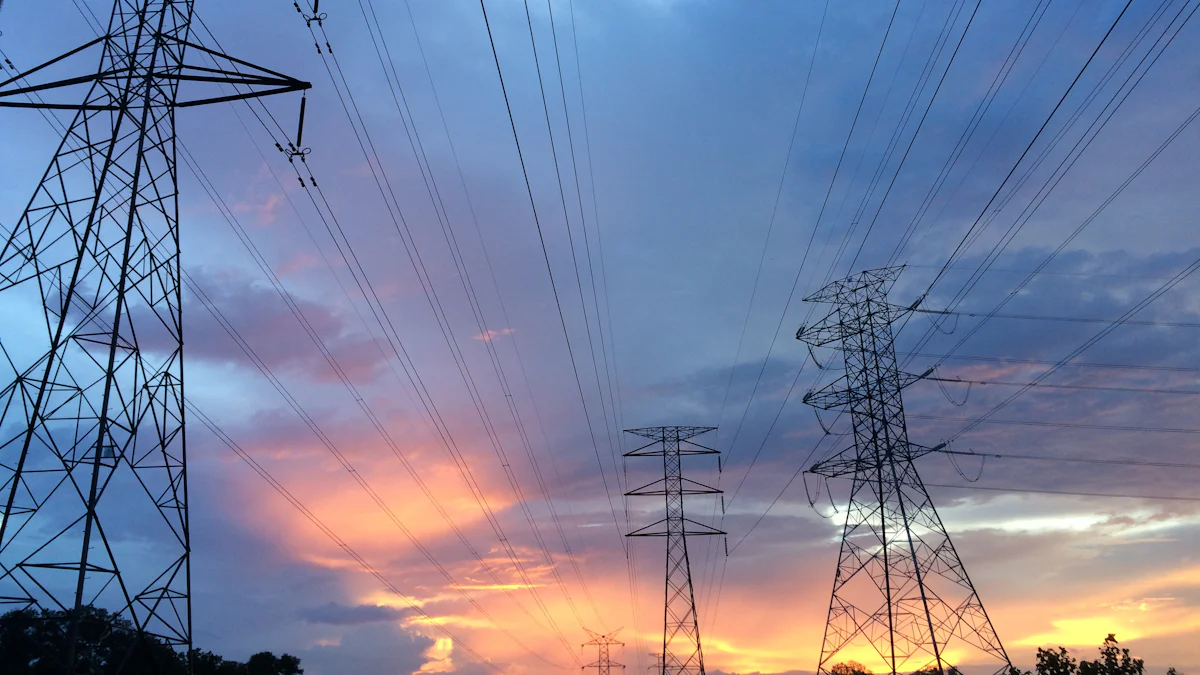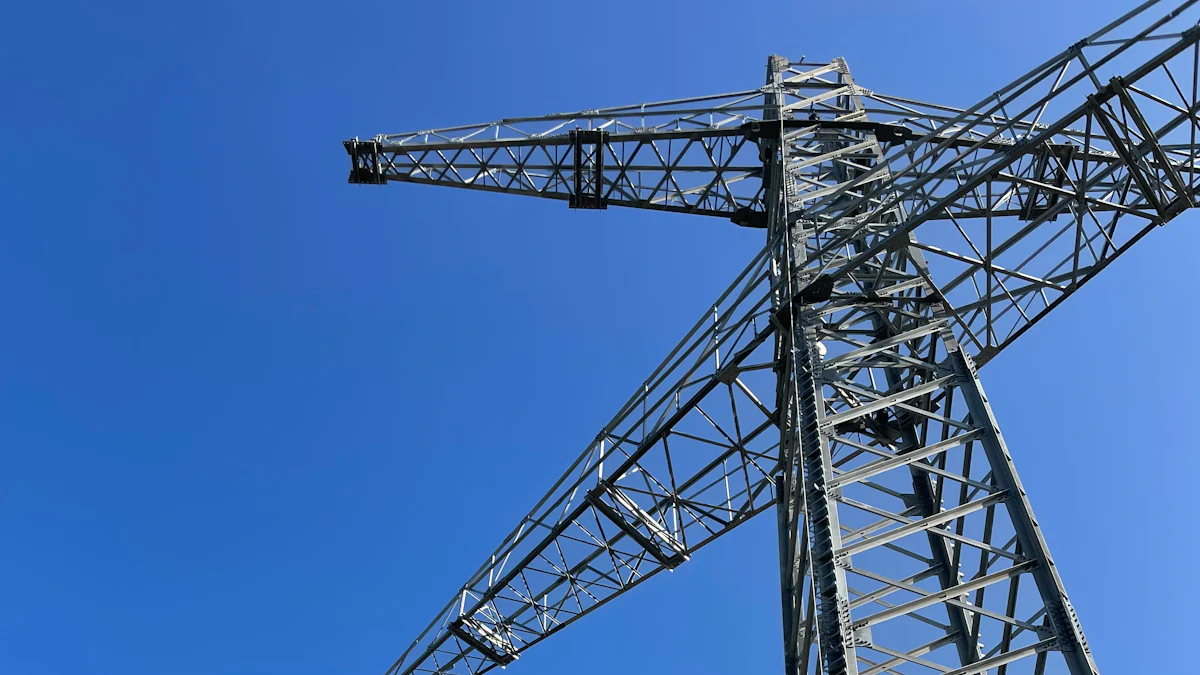
Let’s talk about the Power Distribution Unit (PDU). A basic Power Distribution Unit is designed to distribute power to multiple devices efficiently and reliably. It’s a straightforward solution for managing power. On the other hand, a smart PDU elevates functionality by offering advanced features such as real-time monitoring, outlet-level control, and even environmental sensors.
Why is this important? Selecting the right Power Distribution Unit can help save energy, enhance efficiency, and ensure the continuous operation of critical systems. Whether you require simplicity or advanced control, understanding these distinctions allows you to make more informed decisions.
Key Takeaways
- Basic Power Distribution Units (PDUs) are affordable and good for simple setups. They provide steady power but lack advanced features.
- Smart PDUs have extra features like remote monitoring and outlet control. They also have sensors, making them great for places like data centers or hospitals.
- Pick the right PDU based on what you need. Think about your power use now and in the future for better power management.
Understanding Basic Power Distribution Units

Features of Basic Power Distribution Units
Let’s start with the basics. A basic Power Distribution Unit is like a power strip but designed for IT environments. It takes power from a single source and distributes it to multiple devices. These units are simple yet reliable. They don’t have fancy features, but they get the job done.
Here’s what you can expect from a basic PDU:
- It distributes voltage and current to several outlets.
- Some models, called monitored PDUs, display electrical data.
Basic PDUs are cost-effective and easy to install. They’re perfect for setups where you just need stable power delivery without extra bells and whistles.
Limitations of Basic Power Distribution Units
Now, let’s talk about what basic PDUs can’t do. They don’t offer monitoring or control features. You can’t track power usage or manage outlets remotely. This makes troubleshooting or maintenance a bit tricky.
They also lack advanced functionalities like environmental sensors or outlet-level control. If you’re looking for something to help optimize energy use or manage power remotely, a basic PDU won’t cut it.
Use Cases for Basic Power Distribution Units
So, where do basic PDUs shine? They’re ideal for environments that need straightforward power distribution. For example:
| Environment/Industry | Description |
|---|---|
| IT and Server Rooms | Powers multiple devices and keeps power distribution organized. |
| Commercial Buildings | Handles systems like lighting, HVAC, and office equipment. |
| Education Environments | Supports computer labs and tech-heavy areas in schools and universities. |
| Offices | Powers computers, printers, and phones. |
| Small Server Rooms | Distributes power to servers and networking equipment. |
| Home Use | Adds extra outlets for home electronics. |
If you’re working in one of these spaces and don’t need advanced features, a basic Power Distribution Unit is a solid choice.
Exploring Smart Power Distribution Units

Features of Smart Power Distribution Units
Smart Power Distribution Units are like the superheroes of power management. They don’t just distribute power; they also give you tools to monitor and control it. These units come packed with advanced features that make managing power a breeze.
For starters, they offer outlet-level monitoring. This means you can track how much power each device uses. They also include environmental monitoring, which keeps an eye on temperature and humidity. If something goes beyond a safe range, you’ll get alerts based on thresholds you set. This helps you stay ahead of potential problems.
Another cool feature? Remote access. You can control and monitor your Power Distribution Unit from anywhere. Whether you’re at the office or halfway across the world, you’re always in the loop.
Benefits of Smart Power Distribution Units
Why should you care about these features? Because they make life easier and save money. Smart PDUs improve energy efficiency by letting you manage power precisely. You can even integrate them with existing systems for seamless operations.
Here’s what they bring to the table:
- Remote monitoring helps you respond quickly to issues, reducing downtime.
- Precise energy management ensures you’re not wasting resources.
- Individual outlet control lets you pinpoint energy hogs and plan better.
Imagine being able to reboot a device remotely or spot inefficiencies before they become costly problems. That’s the power of a smart PDU.
Applications of Smart Power Distribution Units
Smart PDUs shine in industries where reliability and efficiency are critical. In data centers, they distribute power to servers and networking equipment while preventing overloads. They’re also essential in telecommunications, ensuring network equipment stays online.
Here’s a quick look at where they’re used:
| Industry | Application Description |
|---|---|
| Data Centers | Monitoring power consumption of racks to prevent overloading and optimize usage. |
| Manufacturing | Ensuring operational efficiency and safety of industrial equipment. |
| Healthcare Settings | Providing uninterrupted power to critical medical equipment. |
| Telecommunications | Keeping network equipment within safe power limits. |
Whether it’s a hospital, a factory, or a data center, smart PDUs help keep things running smoothly.
Comparing Basic and Smart Power Distribution Units
Differences in Features and Functionality
When it comes to features, basic and smart Power Distribution Units couldn’t be more different. A basic unit focuses on one job—distributing power. It’s simple, reliable, and easy to use. But that’s about it. You won’t find any monitoring or control options here.
Smart PDUs, on the other hand, are packed with advanced features. They let you monitor power usage at the outlet level. You can even track environmental conditions like temperature and humidity. And the best part? You can control everything remotely. Imagine rebooting a device from your phone or spotting a power issue before it becomes a problem. That’s the kind of functionality smart PDUs bring to the table.
Use Cases and Applications Compared
The use cases for these units vary widely depending on the environment. Let’s break it down:
| Industry | Basic PDU Use Case | Smart PDU Use Case |
|---|---|---|
| Small Office Environments | Simple power delivery for limited devices | N/A |
| Non-Critical Applications | Efficient power distribution without monitoring | N/A |
| Budget-Constrained Organizations | Cost-effective power distribution solution | N/A |
| Data Centers | N/A | Monitor power consumption and energy efficiency |
| Server Rooms | N/A | Granular control and real-time monitoring |
| Remote Locations | N/A | Remote monitoring and management |
Smart PDUs shine in industries like data centers and healthcare, where reliability is critical. They help prevent overloads and ensure uninterrupted power. Basic PDUs, however, work well in small offices or budget-conscious setups where advanced features aren’t necessary.
Cost and Investment Considerations
Let’s talk money. Basic PDUs are affordable. They’re perfect for organizations with tight budgets. But smart PDUs? They require a higher upfront investment. That’s because of their advanced features.
Here’s the good news. Smart PDUs can save you money in the long run. They reduce downtime and improve energy efficiency. Plus, if you already have basic PDUs, you can upgrade them with smart power cables. This way, you get some of the benefits without replacing your entire setup.
So, while smart PDUs cost more initially, they’re worth it for businesses that need advanced control and monitoring.
Choosing the Right Power Distribution Unit
Evaluating Your Power Distribution Needs
Choosing the right Power Distribution Unit starts with understanding your specific needs. I always recommend asking yourself a few key questions:
- Where will I install it?
- What type of power supply do I need?
- How much power does my equipment require?
- How many outlets do I need?
- What kind of receptacles match my devices?
- Do I need extra features like monitoring or remote management?
It’s also important to assess the total power consumption of your devices. This helps you avoid overloading the unit. Think about the environment too. Are you setting up in a small office, a data center, or a remote location? Matching the PDU type to your installation needs ensures smooth operations.
Finally, balance your budget with long-term value. A basic PDU might save money upfront, but a smart PDU could offer better cost-effectiveness over time.
When to Choose a Basic Power Distribution Unit
Basic PDUs are perfect for straightforward setups. If you’re powering a small office or a few devices, they’re a great choice. They’re also ideal for non-critical applications where advanced features aren’t necessary.
For organizations with tight budgets, basic PDUs provide a cost-effective solution. They deliver reliable power distribution without the extra expense of monitoring or control features. If simplicity is all you need, a basic PDU gets the job done.
When to Opt for a Smart Power Distribution Unit
Smart PDUs shine in environments where efficiency and control are critical. They’re perfect for data centers, healthcare facilities, and manufacturing plants. If you need real-time power monitoring, remote management, or environmental sensors, a smart PDU is the way to go.
I’ve seen how features like switched outlets and advanced analytics can transform power management. You can reboot devices remotely, track energy usage, and even integrate the PDU with other systems. Smart PDUs also prepare you for future growth. They offer extra capacity and durability, ensuring long-term reliability.
If you’re managing multiple locations or planning for expansion, investing in a smart PDU makes sense. It might cost more upfront, but the savings in energy efficiency and reduced downtime make it worth every penny.
Choosing between basic and smart PDUs boils down to understanding their differences. Here’s a quick comparison:
| Feature | Basic PDUs | Smart PDUs |
|---|---|---|
| Power Distribution | Simple and reliable | Advanced with monitoring and control |
| Monitoring and Control | Not available | Real-time and outlet-level |
| Energy Efficiency | No optimization | Tracks usage and identifies savings |
| Remote Management | Not supported | Accessible from anywhere |
| Environmental Monitoring | Not included | Sensors for temperature and humidity |
Basic PDUs are cost-effective and great for simple setups. Smart PDUs, however, offer advanced features like remote management and energy optimization, making them ideal for complex environments.
Always match your PDU choice to your needs. Think about your current setup and future growth. A well-chosen PDU prevents overloads, protects equipment, and ensures efficient power management.
So, what’s your next step? Evaluate your requirements and pick the PDU that aligns with your goals. Whether you need simplicity or advanced control, the right PDU will keep your systems running smoothly.
FAQ
What is the main difference between a basic PDU and a smart PDU?
Basic PDUs distribute power without extra features. Smart PDUs offer advanced tools like monitoring, remote control, and environmental sensors for better power management.
Can I upgrade a basic PDU to a smart PDU?
Yes! You can add smart power cables to some basic PDUs. This gives you monitoring capabilities without replacing the entire unit.
Are smart PDUs worth the higher cost?
Absolutely! Smart PDUs save money over time by improving energy efficiency, reducing downtime, and offering remote management. They’re a smart investment for critical environments.
Post time: Jan-13-2025

